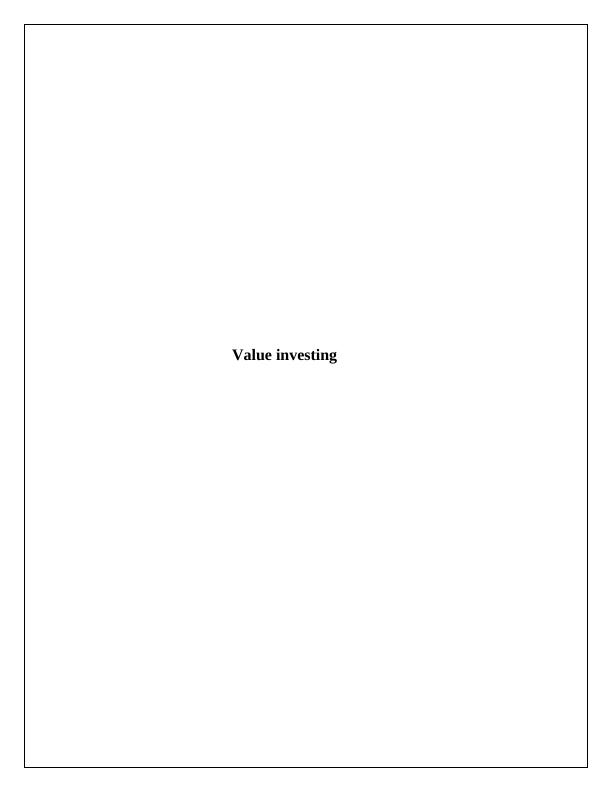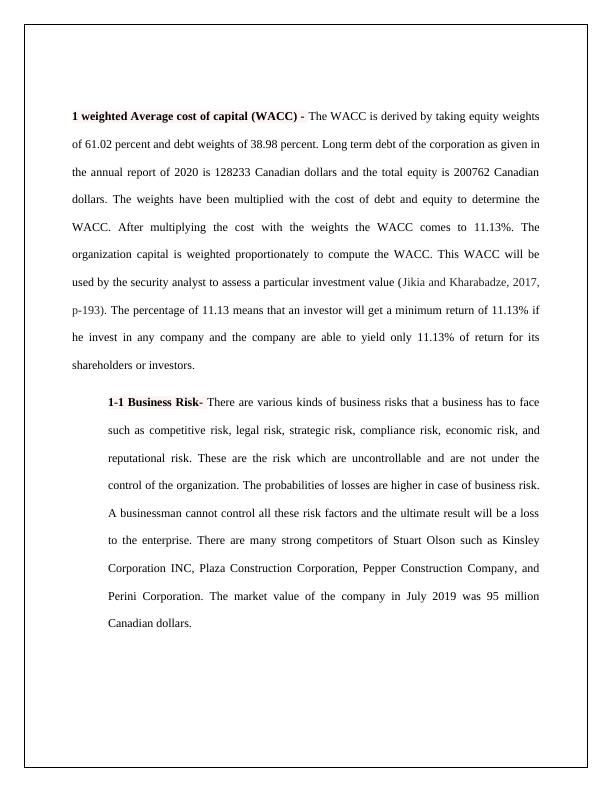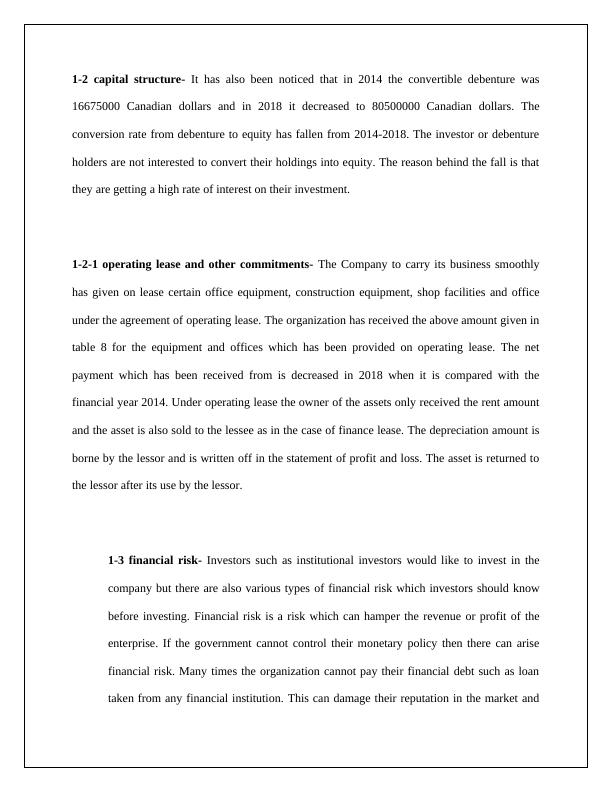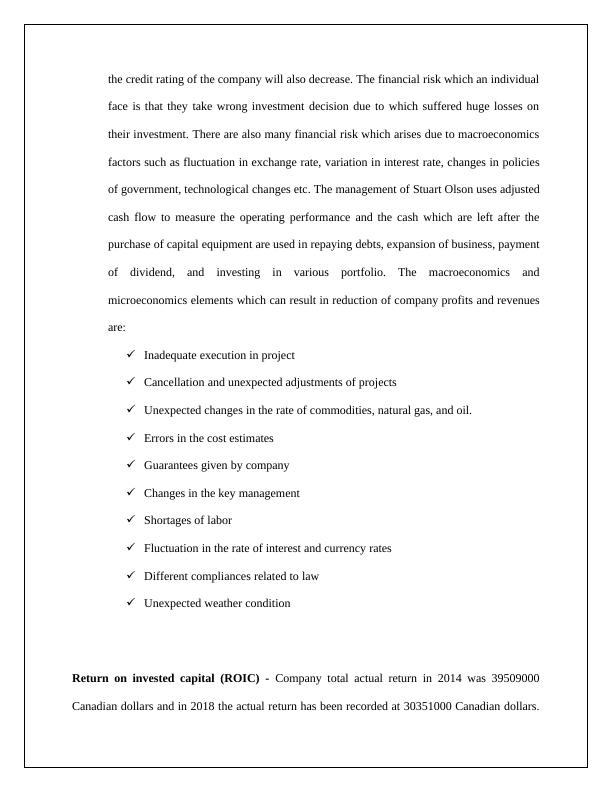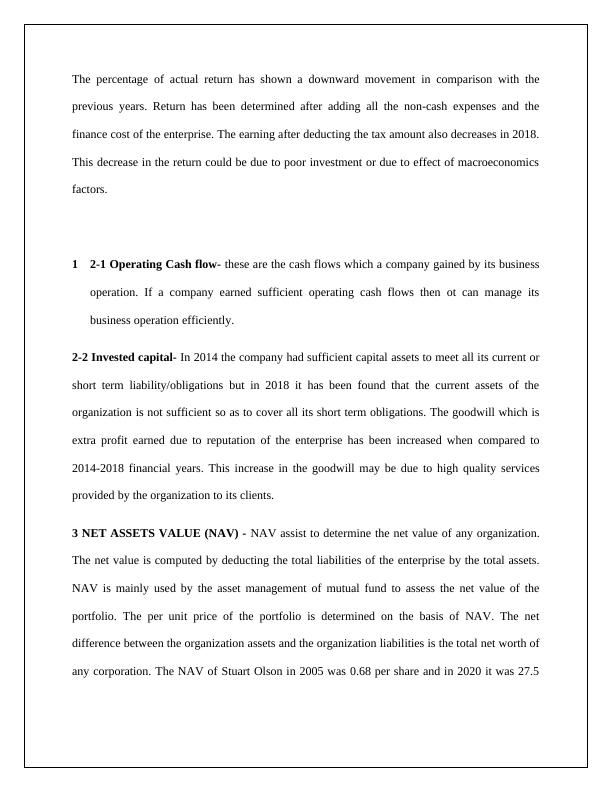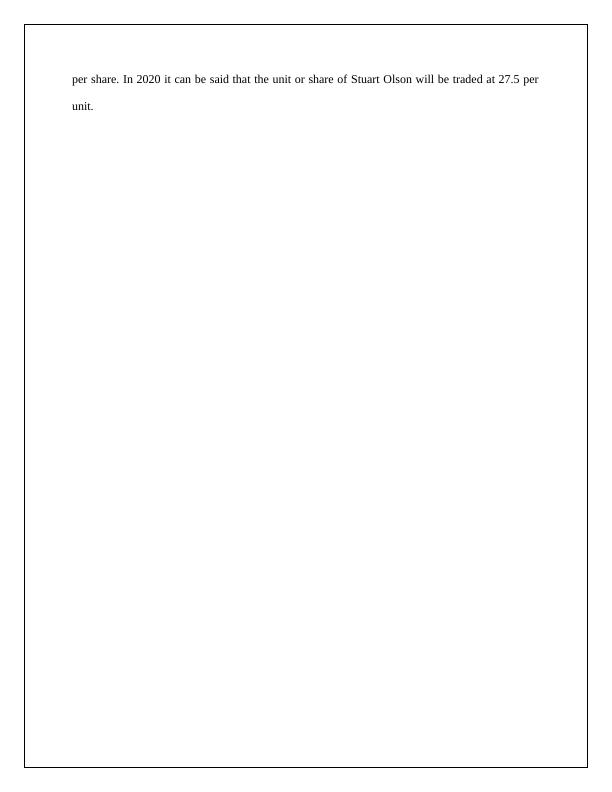Assignment on Value Investing
Undesirability: The P/E Ratio for Canada Packers was found to be $39.39 which is very high as per value investing principles as well as among its peers. However, the P/B ratio is 1.28 and is less than 1.4, which qualifies the company as a value play. Obscurity: The market cap of the company was found to be $496 million, less than the $550 million value threshold for a Canadian company to be a small cap. However, the company has underperformed the industry by 30% over the last 5 years and is now undergoing a massive restructuring exercise to rationalize its operations. Further, since April 1990, the volume of its shares had dropped down considerably from its peak. The stock is covered by a few analysts. Therefore, the stock could be a candidate stock for strong value play. Business Risk Analysis: Industry & Company Analysis - Looking at macro-economic factors, such as the free trade agreement with the USA combined with higher wages in Canada due to regulations, the company seems to be less competitive to its US peers. At the same time, the company is the biggest player
Added on 2022-08-19
Assignment on Value Investing
Undesirability: The P/E Ratio for Canada Packers was found to be $39.39 which is very high as per value investing principles as well as among its peers. However, the P/B ratio is 1.28 and is less than 1.4, which qualifies the company as a value play. Obscurity: The market cap of the company was found to be $496 million, less than the $550 million value threshold for a Canadian company to be a small cap. However, the company has underperformed the industry by 30% over the last 5 years and is now undergoing a massive restructuring exercise to rationalize its operations. Further, since April 1990, the volume of its shares had dropped down considerably from its peak. The stock is covered by a few analysts. Therefore, the stock could be a candidate stock for strong value play. Business Risk Analysis: Industry & Company Analysis - Looking at macro-economic factors, such as the free trade agreement with the USA combined with higher wages in Canada due to regulations, the company seems to be less competitive to its US peers. At the same time, the company is the biggest player
Added on 2022-08-19
End of preview
Want to access all the pages? Upload your documents or become a member.

